April 30th, 2010
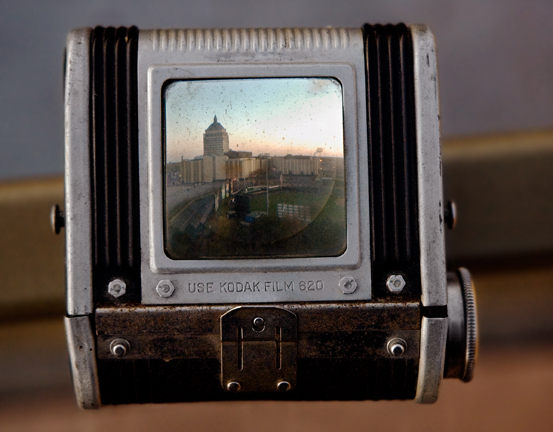
Kodak Headquarters ©Emma Powell
The photograph Kodak Headquarters by Emma Powell was selected for the juried exhibition “Nostalgia” at the PhotoPlace Gallery in Vermont. This photograph is part of the series ”A Life Reviewed: George Eastman through the Viewfinder” - a photographic biography of George Eastman that embraces “nostalgia, legacy, and the portrayal of the past.” To quote from Powell’s website, she says, “[o]f all people, George Eastman’s biography should be photographic… I have photographed subjects related to Eastman’s life and legacy through the viewfinders of a variety of old cameras… Around Rochester, at every turn, I find Eastman’s presence; in the Kodak buildings, in the park that bears his name, and in my own practice of photography.”
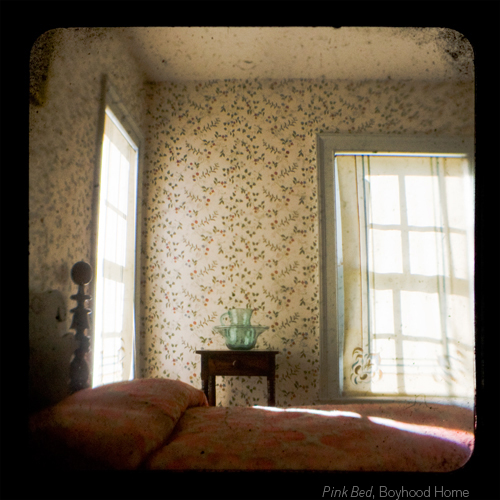
Pink Bed, Boyhood Home ©Emma Powell
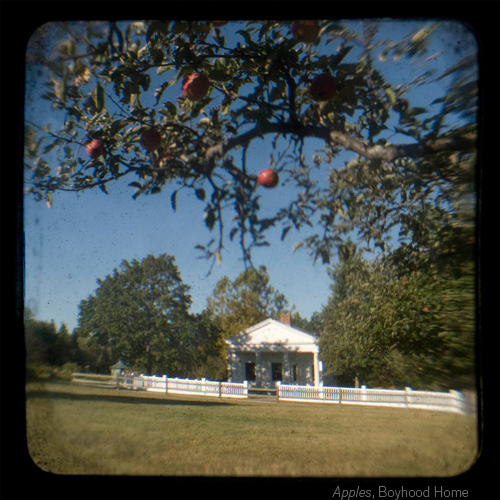
Apples, Boyhood Home ©Emma Powell
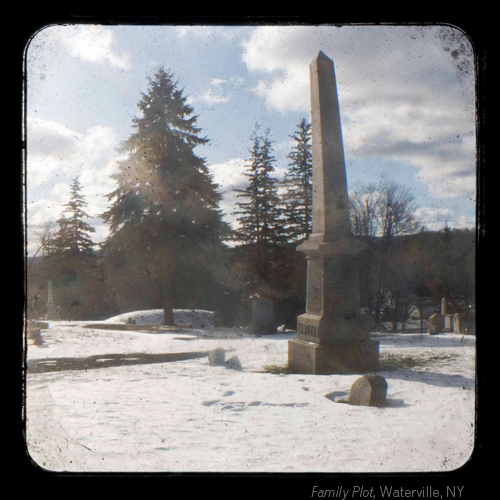
Family Plot, Waterville, NY ©Emma Powell
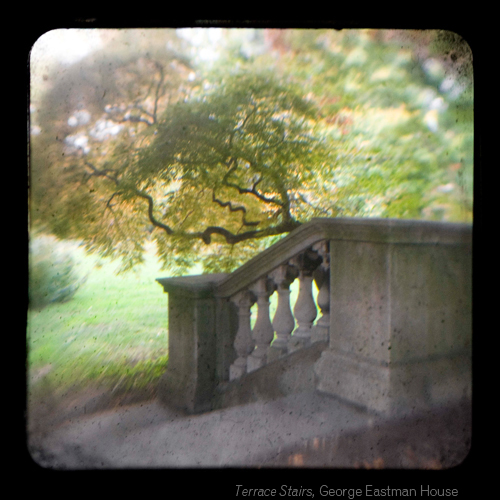
Terrace Stairs, George Eastman House ©Emma Powell
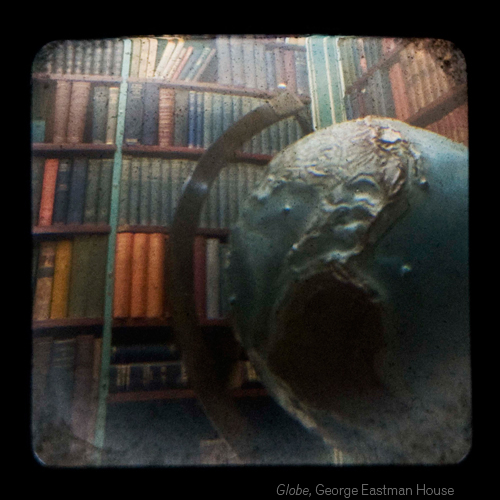
Globe, George Eastman House ©Emma Powell
Emma Powell has her MFA in Photography from the Rochester Institute of Technology. She utilizes alternative photographic processes as well as digital media and her work often addresses photographic history. Emma’s website is www.emmapowellphotography.com. An exhibition of “A Life Reviewed” will be on view at the George Eastman House from August 6-October 31, 2010.
April 29th, 2010
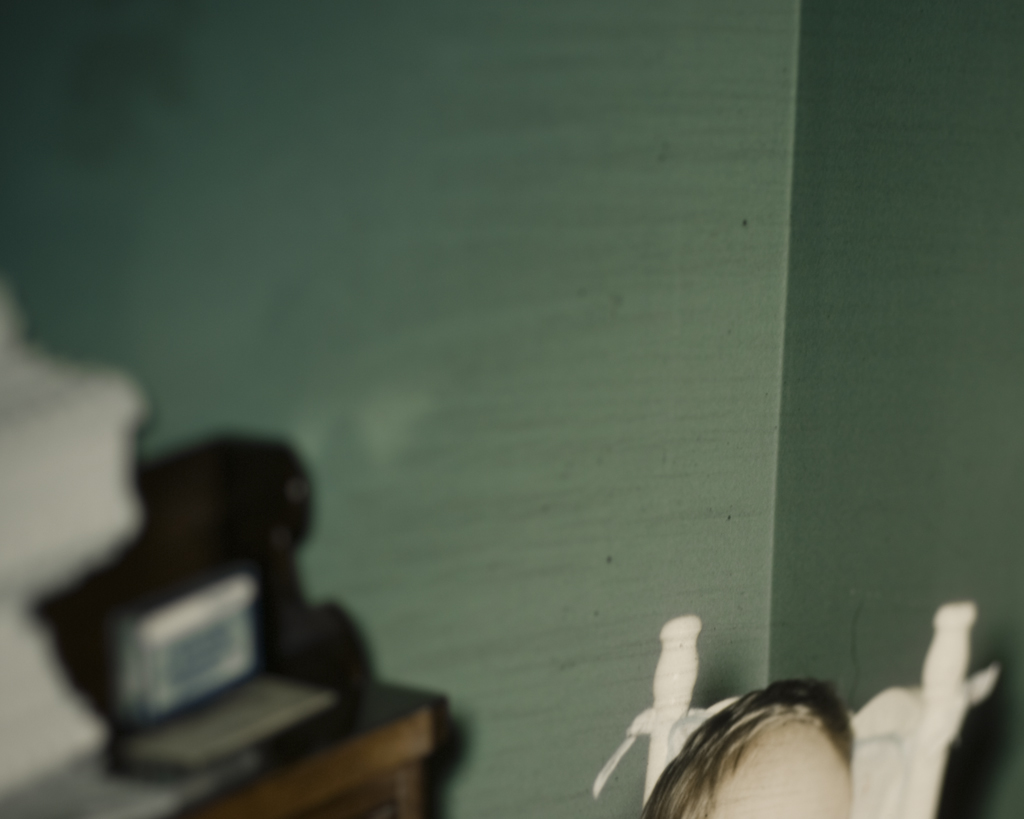
©Gretchen Arnold
Gretchen Arnold was selected for the juried exhibition “Nostalgia” at the Vermont PhotoPlace Gallery. The selected photograph above is from the series “re:collection.” It is an ongoing body of work initially begun during graduate school at RIT and is an investigation of memory and the family photograph.
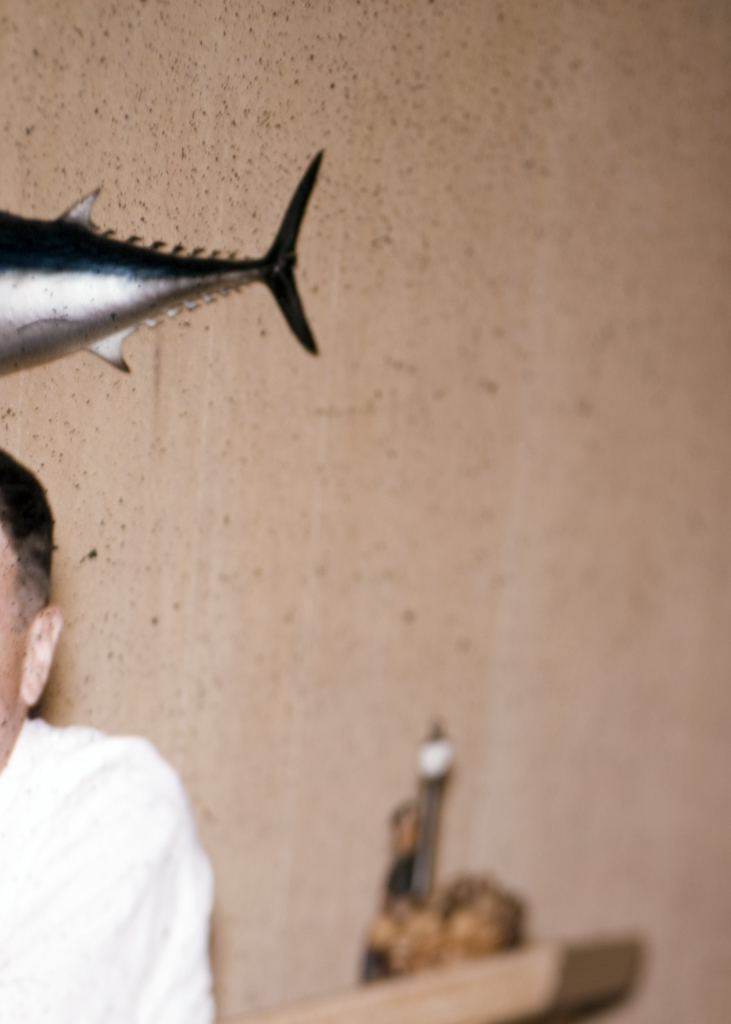
©Gretchen Arnold
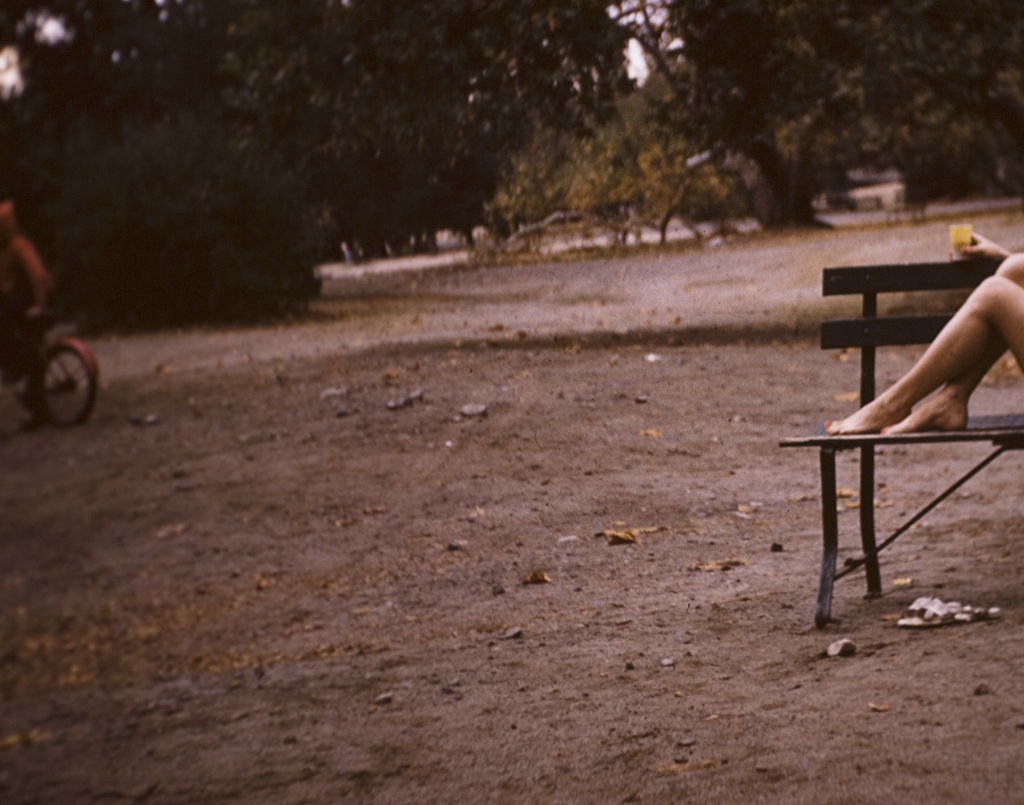
©Gretchen Arnold
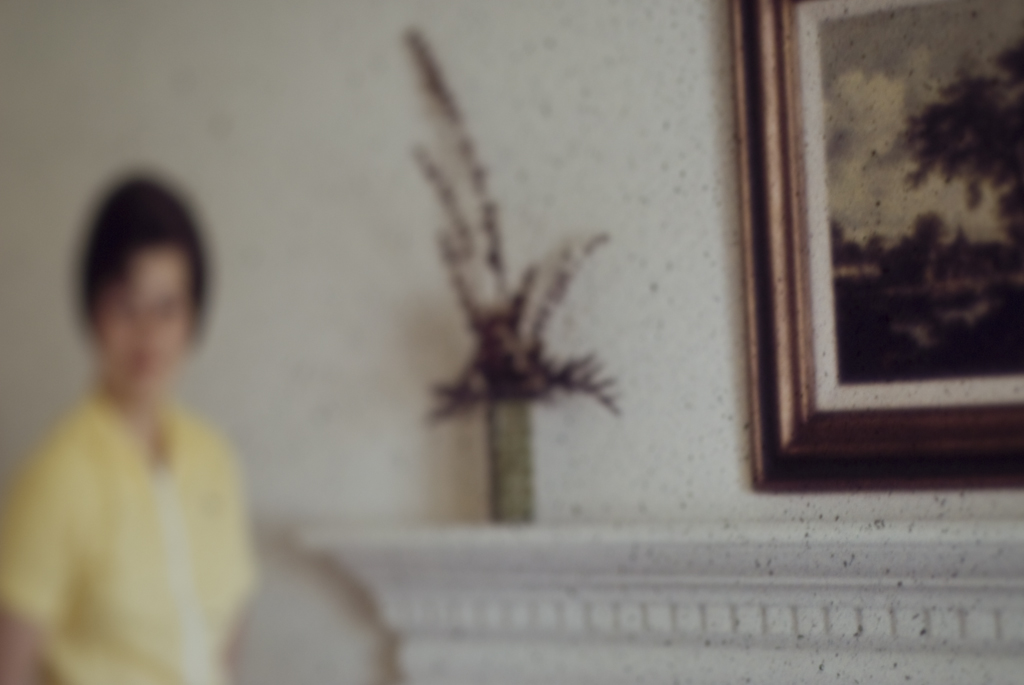
©Gretchen Arnold
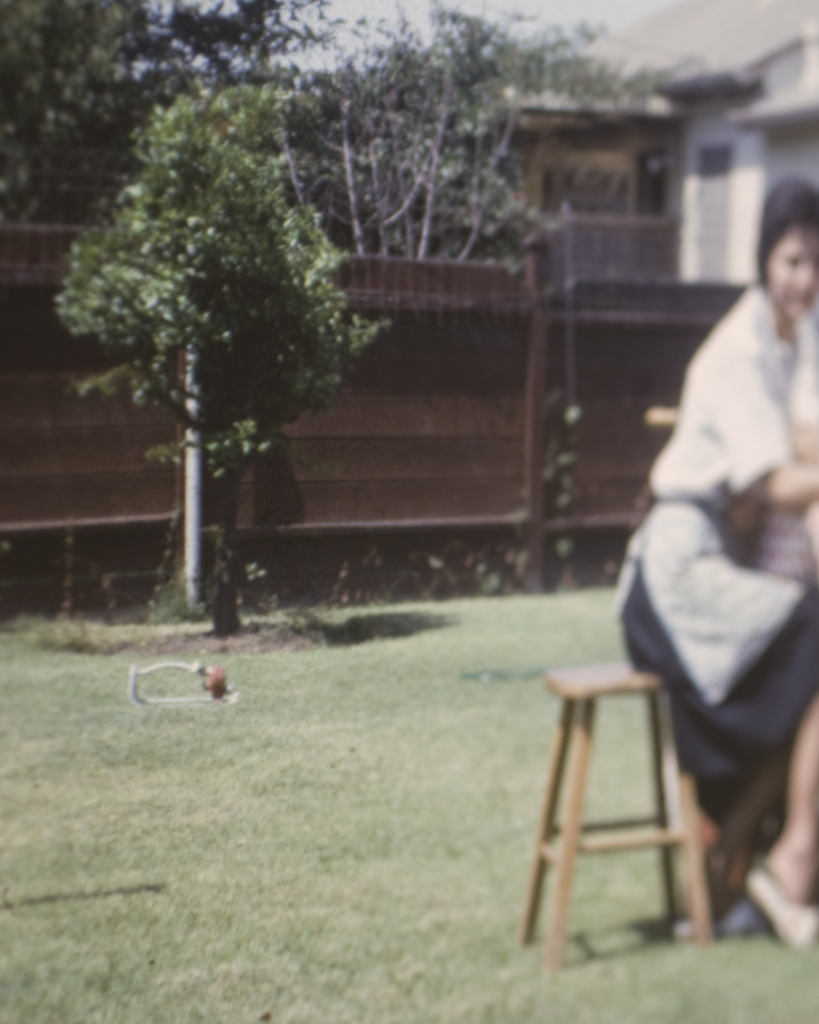
©Gretchen Arnold
About this series Gretchen writes “[t]he task of establishing a narrative in my own box of photographs was daunting;there was no writing on the back of the photos whatsoever – only an occasional date stamp. Upon interrogation I found that the memories of others were as unreliable as my own… I found myself recognizing the details in the setting of the photograph rather than the ostensible event or occasion that was occurring… Do I remember the actual event or moment of a photograph from the past or does the photograph stand in for the memory?… My interest focuses on the reconstruction of imagery from the appropriated family photograph and representing it in a new, yet familiar, installation experience (see installation shot below) for the viewer. The images are made to speak to the idea of memory and or loss of memory in regard to family photographs.”
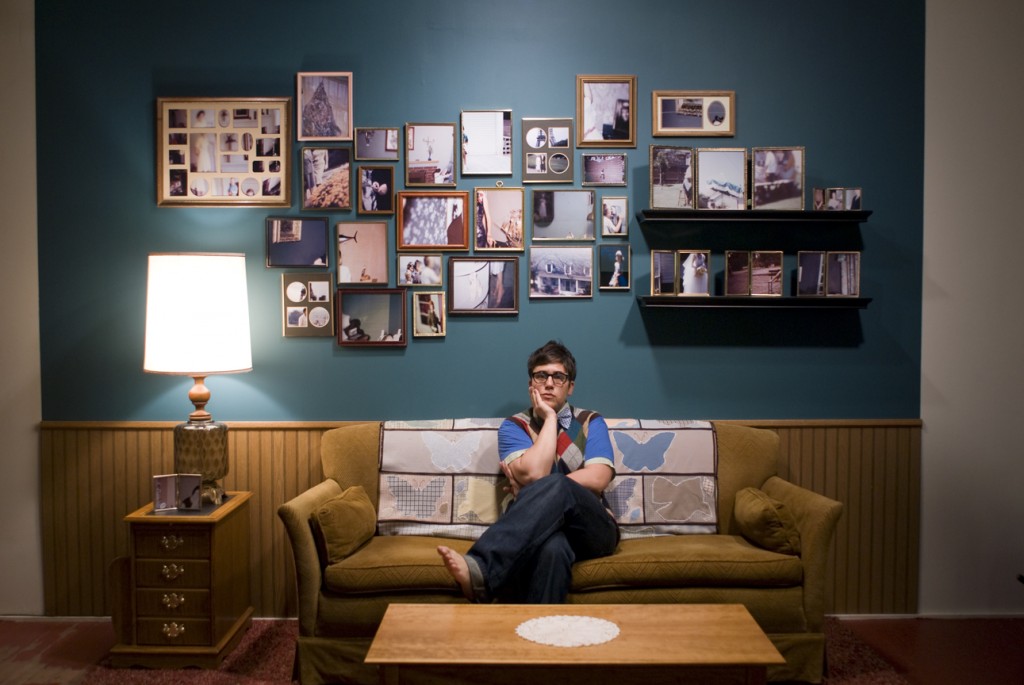
installation of "re:collection" ©Gretchen Arnold
Gretchen Arnold has an MFA from the Rochester Institute of Technology. Her website is www.gretchenarnold.com.
April 28th, 2010
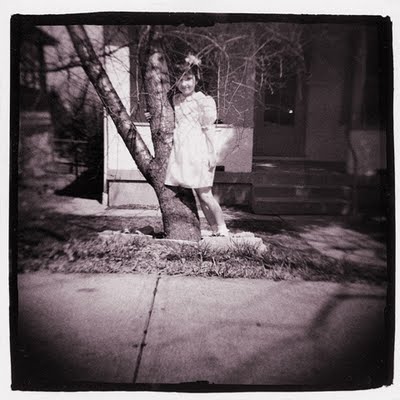
Easter Dress ©Ken Gibson
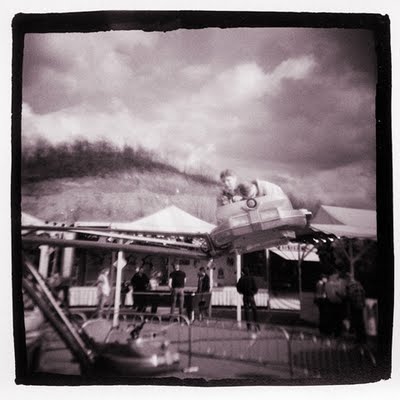
Amusement Ride ©Ken Gibson
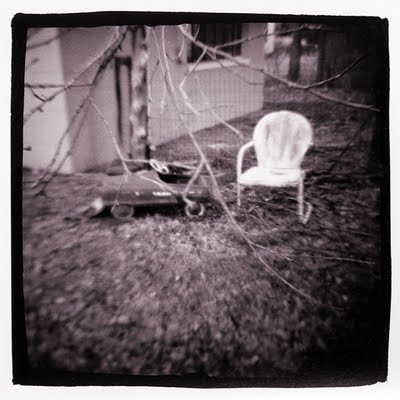
Nancy's Yard ©Ken Gibson
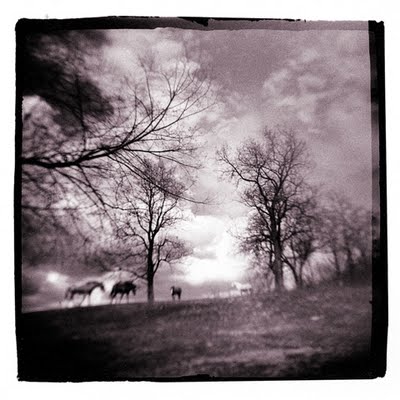
Distant Horses ©Ken Gibson
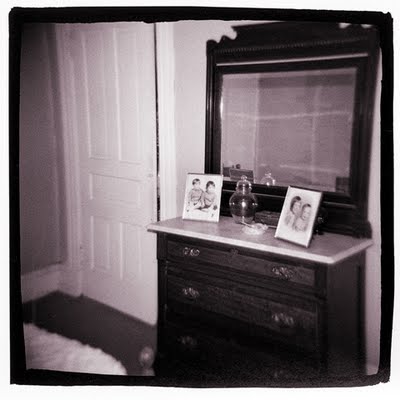
Bedroom Dresser ©Ken Gibson
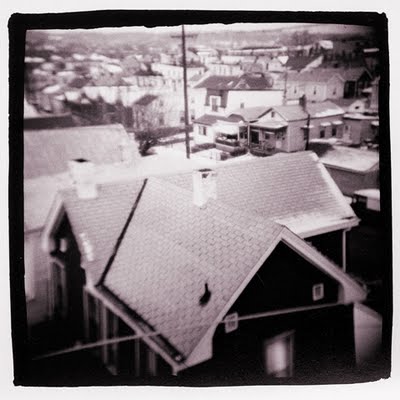
Urban House ©Ken Gibson
Ken Gibson and the photograph Amusement Ride were selected for the juried exhibition “Nostalgia” at the Vermont PhotoPlace Gallery. That photograph, as well as the other images above, are from “Dianatypes.” When asked about this body of work Ken talked about the influence of Nancy Rexroth’s photographs from her series “Iowa.” At the time that Gibson was working on this project, his instructor, Doug Prince, suggested he call her. So Gibson did and, as he recalled, “that led to a wonderful visit with Nancy, including taking the photograph, Nancy’s Yard. Ultimately, for me, the dianatypes explore the conflict between the prospects of things to come and our tendency to reach for things past.” Gibson prints his dianatype images on fiber-based silver emulsion paper at about four-and-a-half inches square. Some prints are selenium toned. To see more from this series by Ken Gibson click here. His website is www.kengibsonimagery.com.
April 27th, 2010
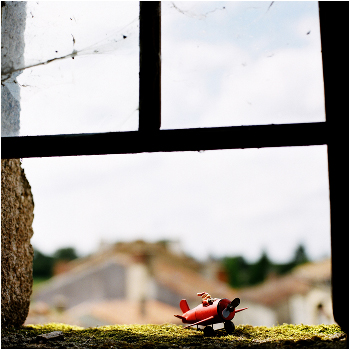
L'envol du Pere Noel ©Estelle Dougier
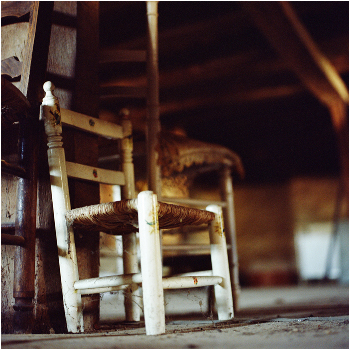
©Estelle Dougier
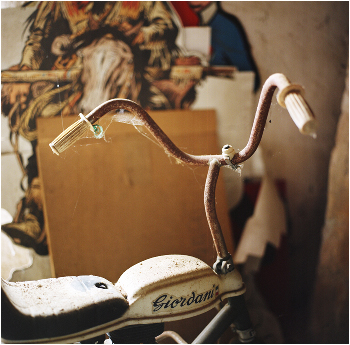
©Estelle Dougier
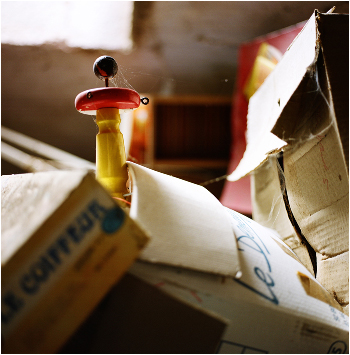
©Estelle Dougier
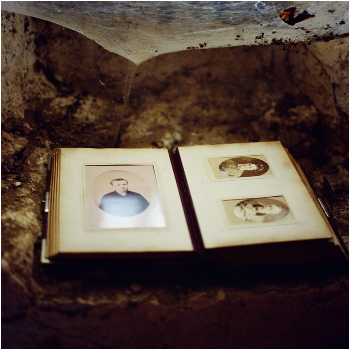
©Estelle Dougier
Estelle Dougier and her photograph of a small red plane on the windowsill (L’envol du Pere Noel) were selected for the juried exhibition “Nostalgia” at the Vermont PhotoPlace Gallery. That photograph, as well as the other images above, are from the series “Backyard.” About this body of work Estelle writes “[t]hese photographs were taken in the attic of an old house in the French countryside. Entering an attic is like ‘falling into nostalgia.’ In this small and confined space under the dust and spider webs, … dog-eared books, forgotten toys, abandoned furniture, and torn open boxes are resting. They are proof of time passing by and memories of vanished moments. This attic is like a childhood backyard, a memory album in three dimensions.” Estelle Dougier’s photograph is the cover image for the Nostalgia exhibition catalog.
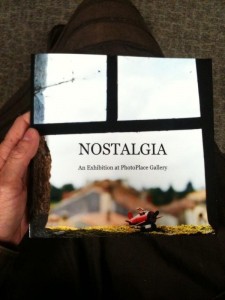
Estelle Dougier is a fine-art photographer born in Paris. Her work has been exhibited in France, the U.K., the United States, Portugal, Italy, Bulgaria and Belgium. She was selected as a finalist for Critical Mass 2009. Her website is www.estelledougier.com.
April 14th, 2010
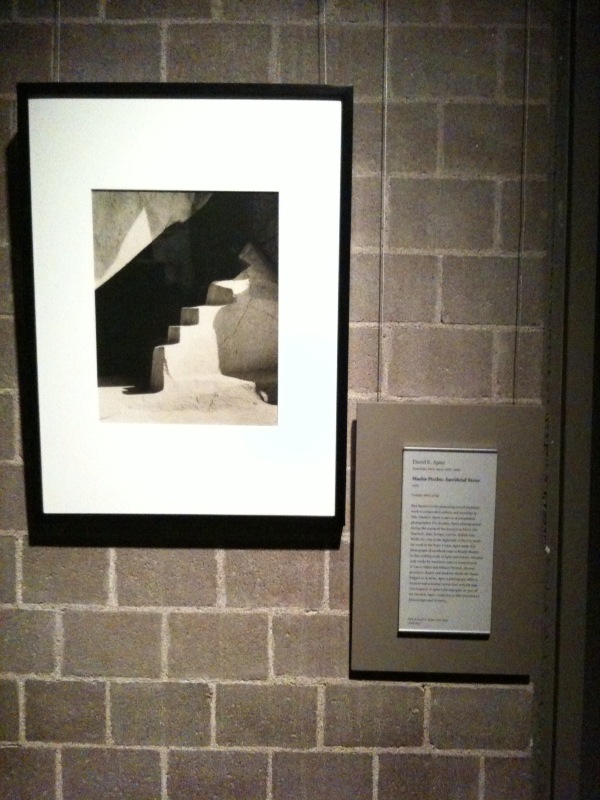
In February I attended the tribute to David E. Apter and his wife Eleanor held in the James E. Duffy Study Room on the fourth floor of the Yale University Art Gallery. Displayed around the viewing room were YUAG’s holdings of vintage prints by David as well as their recent donations to the YUAG African collection. I was honored to be in attendance and to contribute the wall text for one of the pieces in the Gallery.
David E. Apter
American, born 1924
Machu Picchu: Sacrificial Stone
1965
Best known for his pioneering interdisciplinary work in comparative politics and sociology at Yale, Apter is also an accomplished photographer. For decades, Apter photographed during the course of his research in Africa, the Americas, Asia, Europe, and the Middle East. While on a trip to the highlands of Peru to study the work of the Peace Corps, Apter made this photograph of sacrificial steps at Machu Picchu. A striking study of light and texture, resonant with works by twentieth century masters such as Laura Gilpin and Edward Weston, Apter uses abstract geometric shapes and shadows to divide the frame. Elegant in its form, it offers a timeless and articulate connection with the past.
Yale University Art Gallery holds a selection of vintage prints by David E. Apter, but the majority of Apter’s photographs are part of the David E. Apter Collection at Yale University’s Manuscripts and Archives. Yale (the Yale University Art Gallery, Manuscripts and Archives, the Beinecke Rare Book & Manuscript Library, and the Robert B. Haas Family Special Collections) is a treasure trove for photography viewing and scholarship. During that recent visit to New Haven, I spent the day looking at the MFA thesis portfolios of Dru Donovan, Philip-Lorca diCorcia, Matthew Monteith, Walead Beshty, and George Awde. Lisa Kereszi, lecturer in photography at Yale, recently noted the ability to see “an artist’s work in person” on Daylight Magazine’s blog in her post about the recent Lee Friedlander acquisition. (In 2005, YUAG acquired Robert Adams’ complete body of work.) She writes, “[a]s a teacher, I have been honored and excited to introduce my undergraduate students to an artist’s work in person, not behind glass, and not on a wall. Sure, they still can’t touch it or chew gum over it, but there is nothing but air separating us from the print, from the object the photographer conceived of and made, most likely printed, touched and signed. I think it changes the way an 18-year-old understands photography when he/she gets to see something like that, and to not have to solely rely on 72 dpi projections or dusty slides. During a class visit to the Beinecke, one of my students, a poet, damn near had a conniption when we came across an actual, physical note Diane Arbus had written to Stieglitz. Maybe they’re spoiled, but I say, keep the spoils coming.”
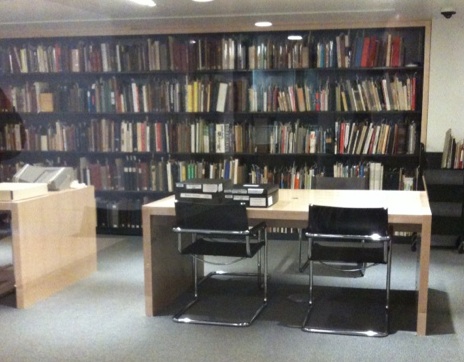
Yale MFA thesis portfolios on the table
So what’s my point? Plan a trip to your local archive/gallery/museum/artist studio and look at some photographs as the objects they are. I know for me I spend too much time looking at work on the computer.
April 7th, 2010
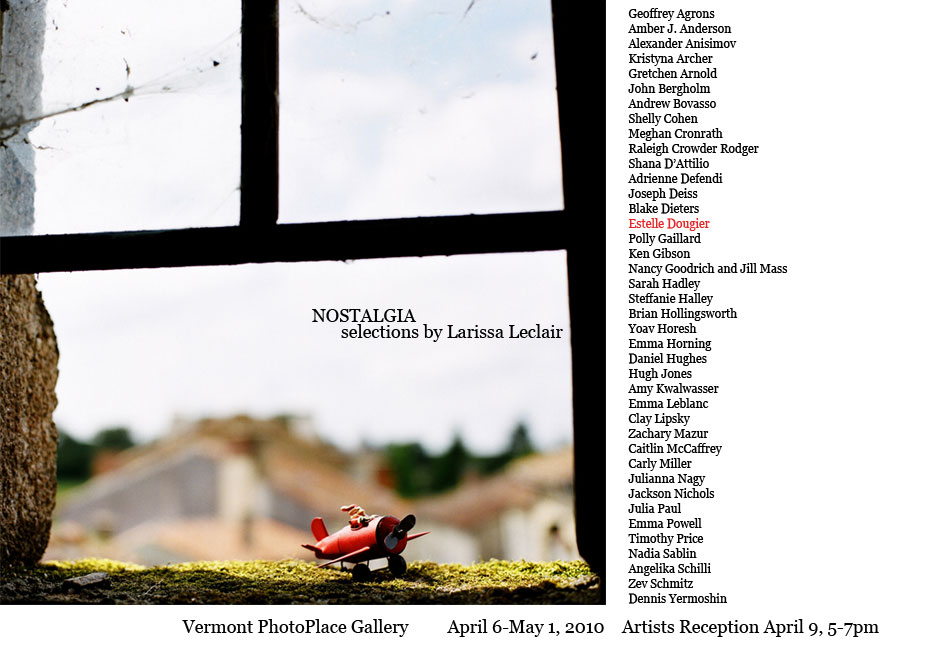
photograph ©Estelle Dougier
“Nostalgia” opened yesterday at the Vermont PhotoPlace Gallery and the artist reception is this Friday, April 9, from 5-7pm. It was a pleasure selecting work for this exhibition. Thank you to all the photographers who submitted their photographs.
Nostalgia
selections by Larissa Leclair
PhotoPlace Gallery
3 Park Street, Middlebury, Vermont
April 6-May 1, 2010
Artists Reception: April 9, 5-7pm
Photographers for the gallery exhibition: Geoffrey Agrons, Amber J. Anderson, Alexander Anisimov, Kristyna Archer, Gretchen Arnold, John Bergholm, Andrew Bovasso, Shelly Cohen, Meghan Cronrath, Raleigh Crowder Rodger, Shana D’Attilio, Adrienne Defendi, Joseph Deiss, Blake Dieters, Estelle Dougier, Polly Gaillard, Ken Gibson, Nancy Goodrich and Jill Mass, Sarah Hadley, Steffanie Halley, Brian Hollingsworth, Yoav Horesh, Emma Horning, Daniel Hughes, Hugh Jones, Amy Kwalwasser, Emma Leblanc, Clay Lipsky, Zachary Mazur, Caitlin McCaffrey, Carly Miller, Julianna Nagy, Jackson Nichols, Julia Paul, Emma Powell, Timothy Price, Nadia Sablin, Angelika Schilli, Zev Schmitz, Dennis Yermoshin.
Photographers for the on-line gallery: Iwan Bagus, Shelly Calton, Claudia Danielson, Gerry Davis, Gina de la Chesnaye, Lisa Fanning, Steve Genatossio, Stephen Hilger, Sarah Paz Hyde, Jeni Jeffrey, Jill Keech, Jonas Kulikauskas, Walter Landry, Nick Marshall, Marilyn Maxwell, Kathryn Mayo, Sonia Melnikova, Trevor Messersmith, Cynthia Miller, Sissel Myklbust, Allen Palmer, Nancy Ridenour, Eric Rippert, Anastasia Samoylova, Stefan Sappert, Virginia Saunders, Debora Schwedhelm, Peggy Shaw, Len Speier, Duane Stevens, Gayle Stevens, Athena Petra Tasiopoulos, Ira Wagner, Willie Wright, Zelda Zinn.
If you can’t make it to Vermont, the work is available online and the exhibition catalog, which features all 75 photographers, can be purchased through the Blurb bookstore.
Congratulations to all the photographers!
April 2nd, 2010
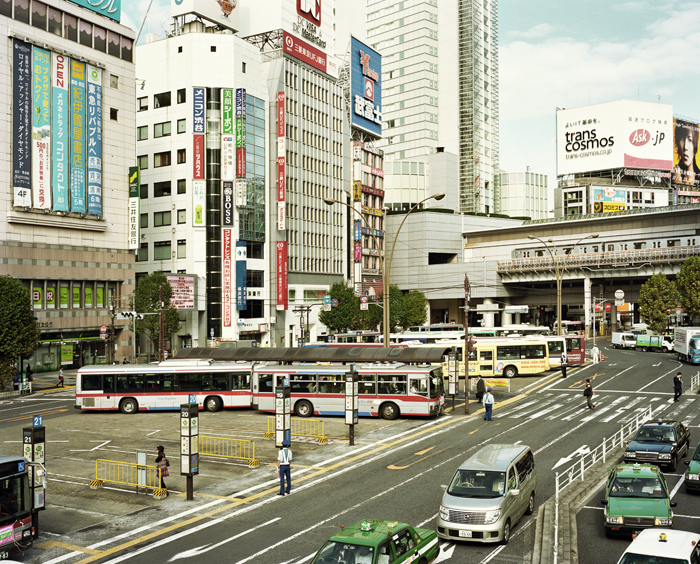
Morning in Shibuya, Tokyo ©Emily Shur
Issue 13 of Fraction Magazine included my interview with Los Angeles-based photographer Emily Shur. The issue, edited by David Bram, features photographs by Jessica Todd Harper, Emily Shur, Tom Leininger, Dalton Rooney, William Greiner, and an exhibition review of “Unmarked” by Mary Goodwin.
Here is an excerpt:
LL: I am drawn to what you choose to include in the photographic frame. For example, “Morning in Shibuya” – in what seems to be a chaotic urban landscape you have created a certain spatial order that I pick up on in all your photographs. Can you talk about this in your work and your thoughts about composition for this photograph?
ES: Composition is very, very important to me. In this photograph, “Morning in Shibuya”, I would say it’s calculated luck that I caught everything where it is. When taking a photo like this one, I usually try to move my eye around the frame and shoot when I think would be a good moment, but it doesn’t always work out. I rarely take more than two or three pictures at a time…meaning, I don’t shoot a whole roll trying to get a certain shot. I shoot what looks good at the time, and I’ll go as far as to wait until a street gets more or less cluttered, for someone to walk into frame, for someone to get out of the way, etc. If the picture doesn’t look how I envisioned it once I get my film back, then that’s unfortunate, but just how things go sometimes. I am also not afraid to crop images or remove small items from the photo that are corrupting an otherwise very nice composition.
LL: That spatial order, composition, and attention to detail seems to be inherent in Japanese culture especially in traditional Japanese landscape gardens. Do you find calm in this meticulousness both photographically and in your own life?
ES: Yes. I have been toying around with the idea of a project or edit revolving around traditional landscape gardens. Every time I go to Japan, I always visit multiple gardens. There is something very comforting to me about Japanese culture, and the landscape gardens are a perfect encapsulation of so many aspects of Japanese life. The respect and attention paid to the vegetation is wonderful. Even insects and spiders are respected enough to be left alone. I love going to a garden and watching the workers tend to the trees and plants. It’s a bit of a fantasy world where everything is important and in it’s place. It’s quiet and peaceful, and there are always older Japanese men with very serious cameras taking photographs. I love that they are out on a weekday morning or afternoon with their cameras; quietly, patiently taking photographs. I’ve even seen some 4×5 view cameras out there, and I always smile and give a thumbs up. To me, this seems like such a lovely way to spend a day…in a beautiful place, with nowhere to be…just looking and seeing and appreciating.
Read the entire interview in Fraction Magazine.
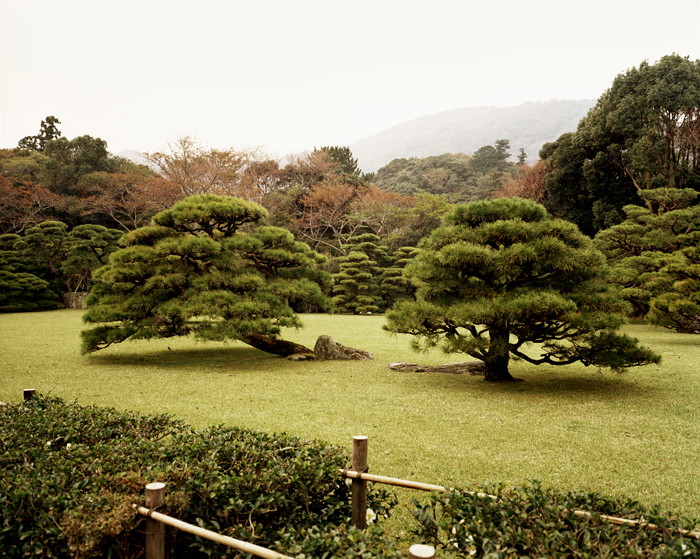
Two Trees, Ise-Shima ©Emily Shur




























